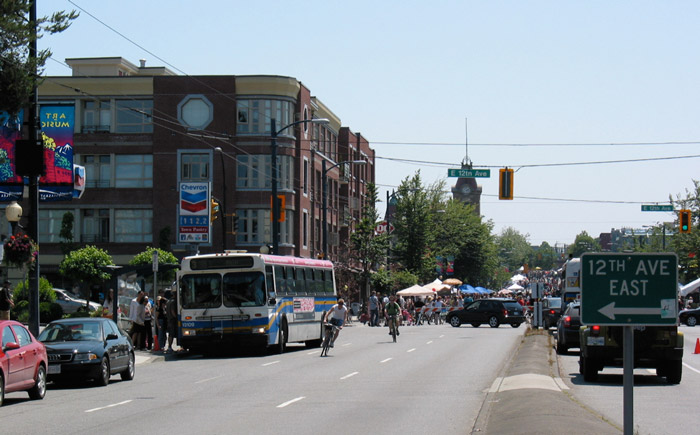
I get around everywhere by bike, public transit and on foot. So when my mayor presented the Mayors’ Council plan during a HUB committee meeting, I was super excited. More SeaBus? B-Lines in my neighbourhood? Bike lanes? YES!
All this and more needs to be funded somehow. There’s a lot of fact-slinging, grumbling and even partying happening, so I thought I’d offer my own personal reasons for supporting the plan. And some info along with it.
Here’s why I’m voting YES:
1. Safe cycling paths are the best!
More safe cycling paths means cyclists like myself — and those usually less comfortable riding in the city — can get to their destinations more easily. 2700 more kilometres of bike paths will encourage more people to take up cycling as a convenient, fast, safe and fun way to get around. Check out my 6+ reasons why bikes are good for Vancouver.
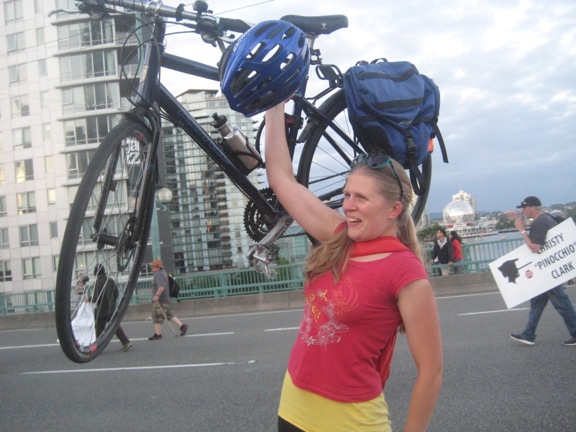
I’m this excited. (Photo by Pia Massie)
2. 50% more SeaBus service, woo!
10-minute SeaBus service at peak times at 15-minute service otherwise will literally change my life. It’s so stressful to miss — or almost miss — one, especially when buses in my neighbourhood often fail to make this critical connection at rush hour. More frequent SeaBus means more freedom in our schedules. I’d hardly need to look at the time. Leave when you want, and you won’t have to wait long. I think this will be a huge draw for people who currently deal with backed-up bridge traffic. Speaking of which…
Continue reading 8 reasons why I’m voting YES in the transit referendum »
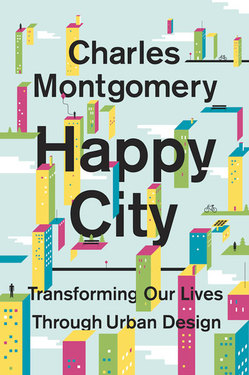
I felt sad when I finished reading “Happy City” the other day. Vancouver author Charles Montgomery weaves together stories, interviews, culture and information in such a compelling way that I felt like a month-long conversation had ended. When I began reading it, I gushed about it on Facebook and with good reason. It has something for any city dweller — from the history and science of happiness and behaviour, to impacts of transportation on wellbeing, to dwelling types influencing social interaction. I returned it to the library reluctantly after my initial 14-day restricted loan period was up, and waited anxiously to get it back until another copy was returned six days late. (I guess the other person liked it even more than I did.) I felt its absence like a close friend.
Continue reading What makes a Happy City? »
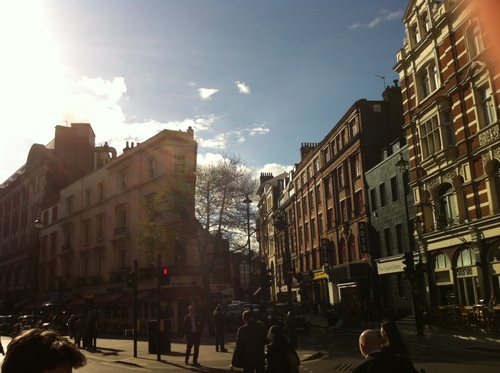
I arrived in England on Friday morning. The British woman who had sat next to me on the plane lamented as we exited that it was cloudy. No problem, I said. “Nothing could be worse than the Vancouver weather the other day.” Anyway, I find the clouds settled over the hills kind of intriguing.
It’s greener here than Vancouver right now, but the hills in the country are still brown from a distance between the patches of grass and pasture. I’m trying to imagine what it looks like when it’s all lush. The place is covered in daffodils, some tulips have sprung, magnolias and the odd cherry bloom, and the birds are gloriously loud. On a forest walk, I spotted salmonberry bushes in early bloom, and learned one can suck on the nectar for a treat, which will be sweet if the petals are easy plucked.
Continue reading Old buildings, new buds in England »
Among other cities paving the way (literally) for higher bicycle ridership is London, England. They’re probably better known for congestion pricing for car traffic (one of the first, but not the first, cities to implement it) than cycling, but their current mayor wants to improve their performance with a new plan that includes a 12-route bicycle commuter network radiating from the city centre, a bike-sharing program launched last summer and a new bike police unit.
In place for a few months now, the two new, blue, bike superhighways are quite successful, increasing by a whopping 70% the number of cyclists on the streets compared to their pre-superhighway incarnation (comparing October 2009 to October 2010).
New figures show that the number of cyclists along the first two Barclays Cycle Superhighway routes, which run from Merton to the City and Barking to Tower Gateway, has risen by 70 per cent with increases of 100 per cent or more seen on some sections during peak hours. — Transport for London
It’s hard to argue with that. I hope to check them out first hand when I visit the city this spring. Have you been there and tried them out? What did you think?
 This daily green blog challenge is in celebration of David Suzuki’s 75th birthday, supporting the David Suzuki Foundation. Please help me out by sponsoring me online now.
This daily green blog challenge is in celebration of David Suzuki’s 75th birthday, supporting the David Suzuki Foundation. Please help me out by sponsoring me online now.
Note: I am writing solely on my own behalf, and do not claim to represent the David Suzuki Foundation or its views here.
Portland, Oregon has several remarkable traits that make the city liveable and more sustainable.
The city is well-known for its cycling culture — 3.9% of residents make their trip by bicycle, beating out Vancouver at 3% (we’re not even in second place!). With the city’s investment in expanding its current 300+ mile network, they’re bound to shoot ahead. (Copenhagen still takes the cake by a long shot.) Bicycle transportation planner Mia Birk from Alta Planning + Design was recently in Vancouver to show us the quick and successful improvements she was involved in to bring more and safer bike lanes to Portland. The results? More cyclists, fewer crashes, less traffic. Their process involved community engagement as well, which isn’t easy. The city’s mayor, Sam Adams, was here a couple years ago to talk about active transportation in Portland. They take it seriously.
Continue reading Green thinking in cities, Part 6: Portland »
While New York City still has problems in some areas that appear to conflict with their progressive plans in others, I’m still including it in this series. With the likes of architect Jan Gehl and DOT Commissioner Janet Sadik-Khan (who was here in 2009) in its arsenal, NYC has started changing the structure of its streets.
Sections of streets have been transformed, if only in trials, into space for cafes and public seating, dramatically changing the look and purpose, and allowing people to linger and rest. Car-free programs abound. They launched a car-sharing program with Zipcar and are looking at a high-tech bike share network. They’re also turning parking meters into bike racks.
Resident Ben Flanner is among others growing rooftop vegetables and I wrote recently about Brooklyn’s Habana Outpost. And finally, Give a Minute: a civic engagement website fielding the public’s ideas on how to green the city. (Sounds like Vancouver’s, eh?)
 This daily green blog challenge is in celebration of David Suzuki’s 75th birthday, supporting the David Suzuki Foundation. Please help me out by sponsoring me online now.
This daily green blog challenge is in celebration of David Suzuki’s 75th birthday, supporting the David Suzuki Foundation. Please help me out by sponsoring me online now.
Note: I am writing solely on my own behalf, and do not claim to represent the David Suzuki Foundation or its views here.
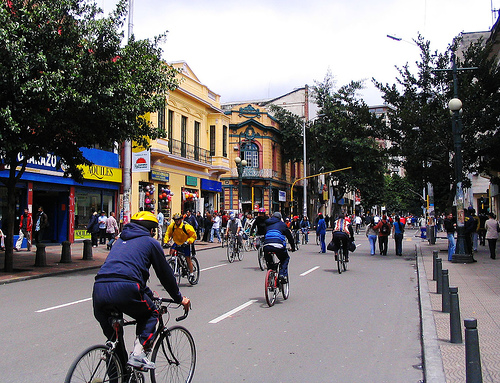
Ciclovia in Bogotà, Colombia. (Photo by
themikebot via Flickr)
Last night I wrote about Curitiba, Brazil and mentioned how their BRT system inspired Bogotà, Colombia. In its turn, Bogotà has been inspiring other cities internationally with the extent to which it has taken its famous ciclovia (literally “bike path”) concept and run — or rather, cycled — with it.
Where Vancouver has its Car Free Day festival annually in four neighbourhoods, Bogotà has embraced a weekly car-free day that stretches far beyond Vancouver’s space.
Every Sunday and holiday from 7 a.m. to 2 p.m., Bogota, Colombia closes off — or, rather, opens up — more than 70 miles [100 km] of city streets. Closed, that is, to cars and open to bicyclists, skaters, walkers, and mass aerobics. When that happens, 1.5 million people come out to enjoy the safety, community, and exercise that a seemingly car-free city allows. According to many participants, the Ciclovi a has transformed life in the city all around for the better. People feel happier, healthier, and more united. — Streetswiki
Continue reading Green thinking in cities, Part 4: Bogota »
Curitiba, Brazil, has recently become a major influence on sustainable transportation in cities, but it was in 1972 that they introduced their first pedestrian street (video). Implemented within three days, the quick street closure stirred up controversy but resulted in a loved public space — a process familiar in many of its modern counterparts. That was just the beginning for this South American metropolis.
While Vancouver has been busy building and expanding expensive metro systems, Curitiba has been attracting incredible ridership to their highly efficient and frequent Bus Rapid Transit system.
The bus system of Curitiba, Brazil, exemplifies a model Bus Rapid Transit (BRT) system, and plays a large part in making this a livable city. The buses run frequently — some as often as every 90 seconds — and reliably, and the stations are convenient, well-designed, comfortable, and attractive. Consequently, Curitiba has one of the most heavily used, yet low-cost, transit systems in the world. — Urban Habitat
Continue reading Green thinking in cities, Part 3: Curitiba »
Copenhagen is reknowned for its cycling culture, one which has developed over the last 100 years despite growing affluence and cheap energy. They lead by example with a 36% mode share for cyclists — in other words, 1 in 3 people choose a bicycle for their commute and other everyday activities, despite the long, cold winter. In contrast, the peak areas of Vancouver achieve only 10% mode share. After seeing bicycle use double in 15 years, the city also plans to increase that modeshare to 40% by 2012 and 50% by 2015. Holy smokes.
A combination of cycle paths and greenways offer Copenhagen’s cyclists a growing 400 km network. Some routes use a “green wave” concept that optimizes travel for cyclists moving at 20 km/h to consistently meet green traffic lights. Blue-painted pavement is used for visbility in intersections, a step past the common bike box used in cities like Vancouver. Bikes can also be brought on the S-train commuter network or you can choose to bikeshare.
Continue reading Green thinking in cities, Part 2: Copenhagen »
If you’re 18 to 30 years old and interested in transportation, urban planning and sustainability, and especially looking to work in the field, consider applying to this conference happening in Vancouver in August. Connecting Communities: BC Youth Summit for Sustainable Transportation is sponsored by TransLink, B.C. Transit, and the Canadian Urban Transit Association. The deadline to apply is Monday, February 21 at 11:59 pm. I hope some positive conversations arise.
 This daily green blog challenge is in celebration of David Suzuki’s 75th birthday, supporting the David Suzuki Foundation. Please help me out by sponsoring me online now.
This daily green blog challenge is in celebration of David Suzuki’s 75th birthday, supporting the David Suzuki Foundation. Please help me out by sponsoring me online now.
Note: I am writing solely on my own behalf, and do not claim to represent the David Suzuki Foundation or its views here.





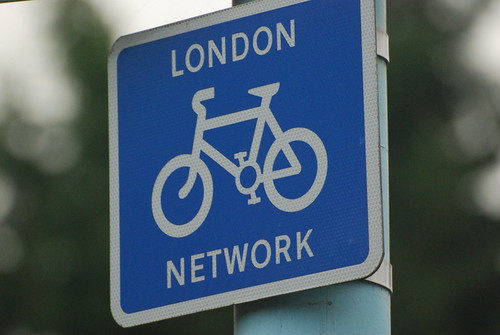 Photo by
Photo by 
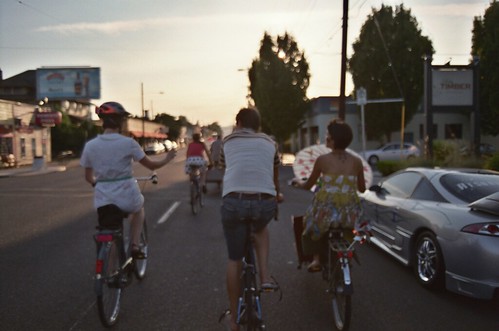
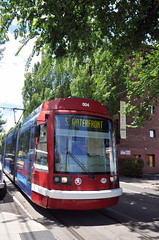
 Ciclovia in Bogotà, Colombia. (Photo by
Ciclovia in Bogotà, Colombia. (Photo by  Photo by
Photo by